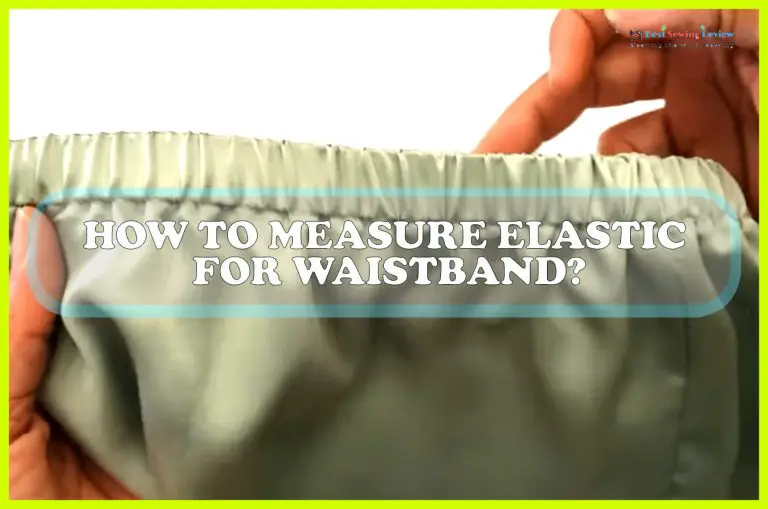To make a zipper lay flat without sewing, use a hot iron and fusible interfacing. Ensure the zipper is properly aligned before pressing.
Zippers that refuse to lay flat can cause frustration and give your projects a less-than-professional finish. Crafters and DIY enthusiasts often encounter this issue when working with bags, clothing, or upholstery. Luckily, there’s a quick fix that doesn’t require a needle and thread, and it comes in handy for both temporary solutions and permanent fixes.
With just a hot iron and some fusible interfacing, you can tame unruly zippers. This method is simple yet effective, ensuring your zippers stay flat and add a polished touch to your work. Understanding this technique is essential for anyone looking to keep their creations looking their best without spending extra time on sewing.
Introduction To Zipper Maintenance
Zipper maintenance is essential for the longevity and functionality of garments and accessories. A common issue many encounter is a zipper that refuses to lay flat, which can lead to snagging, bulging, or a distorted appearance on fabric. This problem often arises from the zipper’s teeth misaligning or twisting from its intended path.
Numerous quick fixes exist to address these issues that do not require sewing. Recognizing the reasons behind the dilemma facilitates a more targeted approach to straightening the zipper. Implementing simple techniques can ensure that zippers remain flat and serve their purpose effectively, without necessitating the time or expertise involved in sewing repairs. The following strategies are grounded in an understanding of the various components of zippers and their proper functionality.
Preparation Steps For Non-sewing Zipper Fixes
To tackle a zipper that won’t lay flat, ensure you have the right tools on hand. Essential items include a pair of pliers, lubricant such as soap or wax, and an iron. Keeping these items within reach streamlines the process, turning it into a hassle-free task.
Begin by examining the zipper. Identify whether it’s a missed insertion of the slider, warping of the fabric, or a stuck zipper. Close scrutiny will clarify the problem, guiding you to the correct solution without having to sew a single stitch.
Proper positioning is key before starting your zipper fix. Lay the item as flat as possible, ensuring easy access to the zipper. If necessary, use an iron to smooth out the fabric alongside the zipper, establishing a flat surface for effective application of the quick-fix methods that follow.
Non-sewing Techniques To Make Zippers Lay Flat
Zippers not lying flat can be frustrating on garments and accessories. The ironing method involves using a household iron to apply heat and pressure to the zipper, encouraging it to lie flat. Set your iron on a low-to-medium setting and use a pressing cloth to avoid direct contact between the iron and the zipper, which could cause melting or damage.
Adhesive solutions like glues and tapes are also effective for managing zipper placement. Specialty fabric tapes can be used to temporarily hold zippers in place, and clear-drying fabric glue can offer a more permanent solution without the need for sewing.
Tension adjustment is another handy method where strategically stretching the fabric around the zipper and adding weight can resolve the issue. Carefully stretch the material while laying a heavy object on top of the zipper for several hours. This practice encourages the zipper to adapt to a flatter position on the fabric.
Aftercare And Maintenance Tips
Preserving the Fix: Handling Zippers Post-Treatment entails simple yet effective practices. After straightening a zipper, ensure that it stays flat by gently closing and opening the zipper, keeping the fabric taut. Zipper care products, like silicone lubricants, can assist in smooth operation and prevent snags or misalignment.
Regular Maintenance to Avoid Future Zipper Problems is crucial for the longevity of your garments. Always zip up before washing to reduce stress on the teeth and slider, and clean the teeth with a soft brush to remove lint or debris. Inspect the zipper periodically for any signs of wear and take immediate action if issues arise.
Knowing When to Opt for Professional Repair or Replacement is key to zipper longevity. If the zipper presents issues like misaligned teeth or refuses to stay flat despite home remedies, seeking a professional’s touch is the best course of action. Regular inspection can spotlight problems early, but if a fix is out of reach, replacement may be necessary to ensure the garment remains functional.
Conclusion
Mastering the art of making zippers lie flat without sewing is a game-changer for any DIY enthusiast. With these creative and simple techniques, you’ve gained the power to tackle zipper troubles confidently. Embrace these no-sew methods and watch as your garments and crafts take on a new level of professionalism and polish.
Let those flat zippers be a testament to your resourcefulness and skill!

